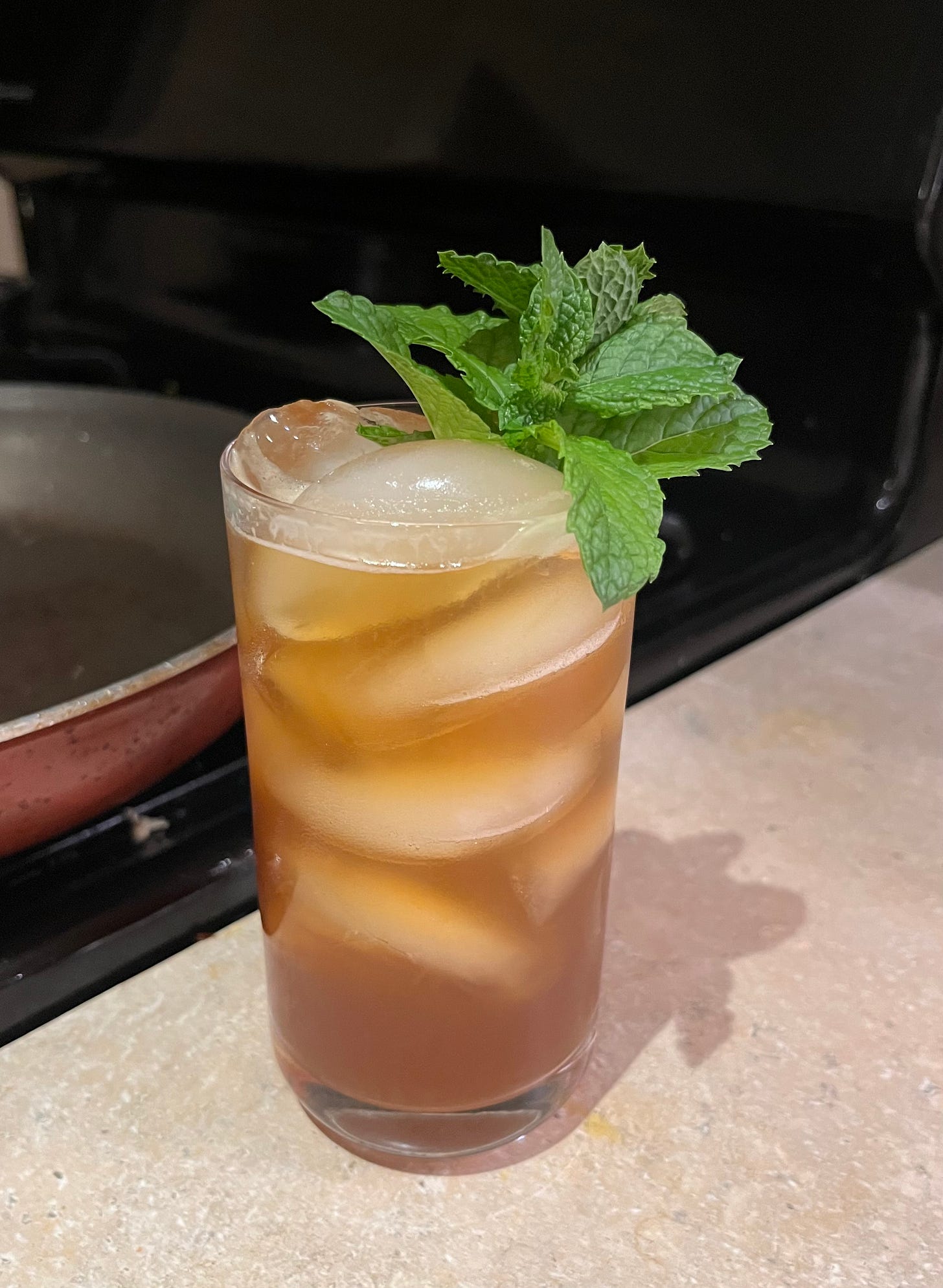I picked a bad week to make a room-temperature cocktail. After days of mid-70s bliss, the temperature ratcheted back up to the 90s in Chicago last weekend — sure, a nice reminder that summer wasn’t over, but it left me only craving ice-cold spritzes and beers. I have a cocktail newsletter to write, though, so I trudged on.
Centuries ago, I may not have had a choice. In the mid-18th century, a Cocktail was a specific drink: alcohol with sugar, bitters, and water. Ice wasn’t widely available, so these were drunk room temperature, with water to dull the bite of the spirit. Nowadays, ice is nearly essential to cocktail making — it chills, dilutes, affects a drink’s texture, and can even make a drink look appealing. But that also explains the continued appeal of a room-temperature drink: It’s more pure and bracing.
Room-temperature drinks are far from mainstream, though, so it’s definitely a technique that belongs in Beta. And by far, its most prominent appearance is through the Heart of Glass. The drink comes from Troy Sidle, another former Violet Hour bartender who went on to help open the New York bar Pouring Ribbons. It feels like a room-temp serve designed for me, since it uses the four ingredients I’m most likely to have around: bourbon, sweet vermouth, Angostura bitters, and Cynar.
But that’s not what drew me to this drink — the recipe did. Unlike every other recipe in Beta, even another of Sidle’s, this one is written in prose. This, along with Sidle’s instructions themselves, makes the drink feel much more process-oriented. Yes, there are measurements, but the instructions are far from precise, calling for “just enough water to remove the burn of the Bourbon” and “a lot of orange oil.” And it’s a pretty involved process for a room-temperature drink, requiring two glasses and a rinse of spirit. Read it for yourself:
Heart of Glass1
Donate a little Eagle Rare 10 Year Bourbon into a rocks glass and then twist at an angle coating the entire inside all the way to the rim of the glass. As not to waste any of the Bourbon, pour what's left into a jigger.
Contribute more Bourbon to that jigger amounting to one ounce and a half. Pour that into a second glass.
Add three quarters of an ounce of each Carpano Antica and Cynar. Along with seventeen drops of Angostura, add just enough water to remove the burn of the Bourbon but not too much as to needlessly dilute it; start with half an ounce.
Zest in a lot of orange oil and then pour into the educated glass. Serves one.
By Troy Sidle
I had my doubts about this drink — rinsing a glass with the same bourbon you were adding to the drink seemed like a precious extra step, and I didn’t quite understand why it needed to be room-temperature. (Perhaps because one of my favorite drinks, Audrey Saunders’s Little Italy, is a chilled, slightly adjusted version of this whiskey-vermouth-Cynar combo.) But then I tasted it. Even with the half-ounce of water, the flavor explodes. There’s lots of cherry on the front of this drink, which evolve into dark chocolate with a touch of smoke. Even at just 17 drops, the spice of the Angostura comes through, amping up the warming quality that the drink already has from being room-temperature. And the bourbon rinse made each sip taste a little different as the cocktail splashed up on the sides of the glass. I didn’t have Eagle Rare 10 (sadly), so I used some of Bob Dylan’s Heaven’s Door bourbon that I’d been sent from my job as a music journalist, which had a bit more bite than the Elijah Craig I also contemplated. I wondered, though, what this drink would taste like with something spicier like Wild Turkey 101, my workhorse bourbon. But who am I kidding: Even as-is, it’s already a new favorite of mine.
A Bonus Cocktail: Improved Fernet Sling
I did get the ice-cold thirst-quencher I wanted, though, when I tried to rework last week’s Fernet Sling. I decided the drink needed to be more sweet and sour, like the Prizefighter No. 1, and that adding mint leaves was genius, but that the Fernet-Branca still needed to be prominent. Here’s what I landed on:
Improved Fernet Sling
6 mint leaves
1 ounce lemon juice
0.75 ounce simple syrup
0.5 ounce Carpano Antica
1.5 ounces Fernet-Branca
Soda water, to top
Muddle all ingredients in a cocktail shaker, being careful not to bruise mint.
Add ice and shake for 10-12 seconds.
Pour into an ice-filled Collins glass. Top with soda water. Garnish with a mint sprig.
This was much more bright and vibrant than the original Fernet Sling, thanks especially to the lemon and mint. But the fernet came through a bit more than the Prizefighter, with a hint of pine rounding out the drink’s minty profile. It could probably work with 0.75 ounces of lemon juice, or with a 50/50 split of fernet and vermouth, depending on your palate. Personally, though, I downed this drink in no time.
Next week, I’ll have another very different whiskey-Cynar combination.
From Beta Cocktails by Maksym Pazuniak and Kirk Estopinal, 2011.





